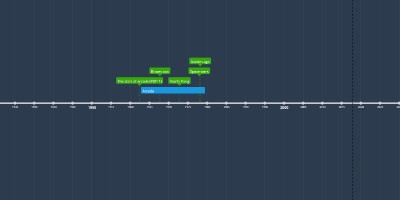Sixth (29 dic 2002 año – 1 dic 2006 año)
Descripción:
While sometimes referred to as the 128-bit era, most consoles from this generation onward use 32-bit processors. For example, while the Nintendo 64 used a 64-bit processor, its successor, the GameCube, used a 32-bit one. The "bit" naming convention was largely dropped by advertisers at this point, though it did still apply to handhelds.The sixth generation saw uniformity like no generation before it. For once you could buy a game for the PlayStation 2, Xbox and GameCube and there would be very little noticeable difference between the three versions. In the past, it had been more obvious (though the Saturn and PlayStation were very similar in design). This left Nintendo in a dodgy position as people saw little reason to buy a GameCube (it didn't have the power of the Xbox or the library of the PS2) other than for the first party titles.
It was also the generation where online play became a factor. Though other earlier consoles had gone online, external adaptors had to be purcahsed, transfer rates were low and the adaptors themselves were never very successful. Many also did not leave Japan. Starting with the Dreamcast, consoles would often have online features built in to the console, and would allow players to compete online for the first time in video game console history. Online features were not utilised very well with the PlayStation 2 and GameCube, but it did mark the beginning of the Xbox Live service which continues to this day.
The Dreamcast was also revolutionary for PAL regions as it was the first console to make use of the more modern PAL60 video mode. PAL television sets traditionally ran at 50Hz with an increased resolution, and many games did not take advantage of this, running 17.5% slower than their North American/Japanese NTSC counterparts and having to make do with large borders to fill the empty space. However, by this point most PAL TVs could emulate an NTSC signal, so games could be finally played at their intended settings. Again, other systems were somewhat slow to adopt this, but by the end of the generation most PAL games could run at 60Hz.
Añadido al timeline:
fecha:
29 dic 2002 año
1 dic 2006 año
~ 3 years and 11 months
